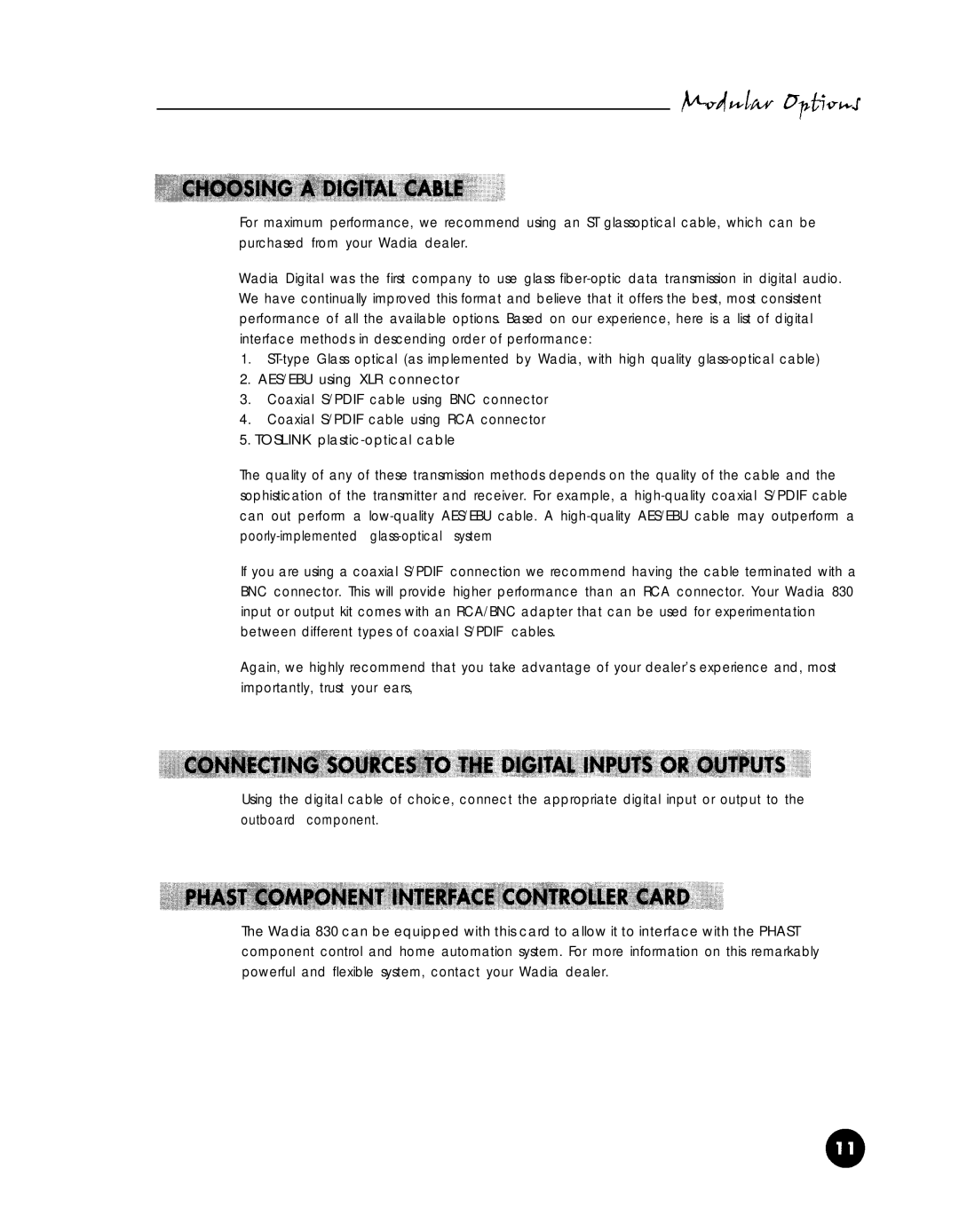
For maximum performance, we recommend using an ST glassoptical cable, which can be purchased from your Wadia dealer.
Wadia Digital was the first company to use glass
1.
2.AES/EBU using XLR connector
3.Coaxial S/PDIF cable using BNC connector
4.Coaxial S/PDIF cable using RCA connector
5.TOSLINK
The quality of any of these transmission methods depends on the quality of the cable and the sophistication of the transmitter and receiver. For example, a
If you are using a coaxial S/PDIF connection we recommend having the cable terminated with a BNC connector. This will provide higher performance than an RCA connector. Your Wadia 830 input or output kit comes with an RCA/BNC adapter that can be used for experimentation between different types of coaxial S/PDIF cables.
Again, we highly recommend that you take advantage of your dealer’s experience and, most importantly, trust your ears,
Using the digital cable of choice, connect the appropriate digital input or output to the outboard component.
The Wadia 830 can be equipped with this card to allow it to interface with the PHAST component control and home automation system. For more information on this remarkably powerful and flexible system, contact your Wadia dealer.
